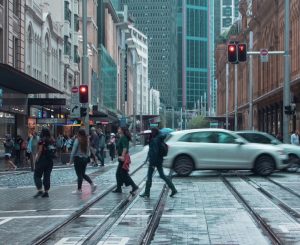Council Traffic Engineering Requirements

When designing and building, it is common for dealing with councils to be a frustrating experience. There are many rules set by the council and the state government that need to be met before a development can be approved by local governments. As part of these rules there are many traffic engineering requirements. These include:
Egress and Ingress
Egress and ingress is how traffic (including vehicles, pedestrians and cyclists) enter and exit the development. These requirements includes issues such as sight distance (the distance a driver has to react to a problem once they see it), how the entering and exiting of the development effects the parking supply (i.e. will the available parking need to be reduce to allow proper egress and ingress). This also includes the egress and ingress volume capacity.
Induced Traffic Volume
This measures the effect of new developments on the local transport network, including the effect of the development on travel times in the local transport network.
Swept Path Requirements
This is required in order to prove the development can function as promised by the developer. This includes proving certain vehicles can enter, exit and get to the places they need to. An example of this would be proving with the use of swept paths that a rubbish truck and enter a development get to and empty all the bins it is required to and exit, without being within required offsets.
Parking Supply
Parking supply requires developers to supply a minimum amount of parking in the proposed development. This is to protect the public parking supply. This minimum can be reduced depending on several factors including public transport, the length of required trips, provision for car sharing and other factors.
Parking Space Requirements
This requires developers to provide parking spaces that meet width, length, overhang and disability requirements. These can be altered to fit a wide range of scenarios.
Lighting
This requires developers to provide enough light for car parks and access ways to function safely and securely.
Cyclist Requirements
This requires cyclists to be catered for, including access to the development and secure storage of bicycles. Typically, there is a minimum number of require bicycle parking spaces.
Signage and Line Marking Requirements
This requires signage and line marking to be to Australian Standards and able to function as expected for the foreseeable future
Other requirements include rules about sustainable transport, the gradients of accessways and many other rules.
On top of the council requirements, the Department of Transport, Planning and Infrastructure may put further requirements on developers and architects.
Epic projects and consulting can assist with meeting or reducing all of the above requirements, as well as dealing with council and state government bodies.
For assistance with meeting engineering requirements, including reducing the minimum parking supply, and meeting swept paths requirements, contact us.
